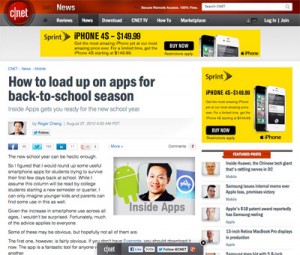
Few families have saved enough, are awarded scholarships or have rich relatives to foot the bills to pay for college. As a result, understanding borrowing is just as important as getting in.
Student Loans are offered by the US Department of Education. The way to get one is to complete a Free Application for Federal Student Aid available each January. The FAFSA requests prior years income for both the parent and student and certain assets for calculating the EFC, Expected Family Contribution. This is the amount that a family “should be able” to contribute to college. Each college then determines Unmet Need by subtracting the EFC from their Cost of Attendance. The Stafford Loan is almost always included as one of the components for reducing the unmet need.
Stafford Loans are strictly for the student without regard to their credit score. Students need only complete a FAFSA to receive a $5,500 Stafford Loan their freshman year regardless of their Expected Family Contribution. Needy students can receive a combination of subsidized loans (3.4 percent interest and1 percent loan fee) in which interest is paid by the US government while the student is in college and unsubsidized loans (6.8% Interest and 1% Loan fee) in which interest accrues or accumulates and paid by the borrower. Under certain circumstances, repayments can be deferred, stopped, reduced or extended. They can also be forgiven for high demand and specialized careers or working in low income communities. Another attractive feature are the four repayment options that are not available with alternative loans.
- Standard 10-year plan with a $50 minimum monthly payment
- Extended repayment plan stretching the repayment period to 25 years
- Graduated payment where plans start off low and gradually increase over 10 years
- Income contingent plans are based on annual income for up to 25 years
Stafford loans are easy to obtain and repay while giving the student a small ownership stake by paying towards their education.
The downside is that the student can only borrow between $5,500 and $7,500 per year, which, in most cases will not cover the total costs.
Perkins Loans (Interest Rate 5 percent and 0 percent fees) are awarded to the more needy students. The federal government subsidizes the interest on the loan while the student is in college. The same repayment options as the Stafford Loan also apply
Bottom Line: Always accept Stafford and Perkins loans before any others.
Parent PLUS Loan (7.9 percent interest and 4 percent loan fee)
The parent PLUS loan is a Department of Education loan that is fully the parent’s responsibility to repay. It offers liberal credit terms and unlike alternative loans does not use the debt to income ratio. If a parent is denied a PLUS loan the student can receive an additional $4,000 unsubsidized Stafford Loan. Since it is only in one parent’s name, the parent with the stronger credit score may be in a better position to borrow. The PLUS loan is also like a life insurance policy as it can be canceled in the event of the parent or student’s death or if the parent becomes totally and permanently disabled. The downside of a PLUS loan is that the parent is fully responsible for repayment even if the student drops out. Standard, Extended and Graduated repayment plans are also available.
Alternative Loans
These are all of the outside loans offered by banks, credit unions, employers, state agencies, etc. Since most students do not have an established credit score, co-signors with good credit can cosign for the student to protect the lender from loan default. Usually the co-signor is off the hook if the student makes timely payments for at least two years to three years after they graduate. Repayment terms are not as flexible as government loans, and are not subject to loan forgiveness, deferment, and forbearance. Fixed rate loans are the best way to go for those with marginal credit since variable rates can be much higher. Check with the college on programs they offer but shop around. www.bankrate.com is an excellent site from which to begin.
Home Equity Loans or lines of credit provide great flexibility, are subject to less interest but are getting harder to obtain as credit requirements have become more stringent. Moreover, those with no equity or low equity would not be eligible.
Credit Card payments can also be expensive but can be used for books and pay other expenses not paid directly to the college. Using a credit card makes sense for incidental expenses that can be paid within each billing cycle rather than to finance them over many years.
Borrowing against a 401 (k) or other retirement plan should be used as a last resort Parents also need some financial security for their future and can ill afford sacrificing it to pay for a college education.
Paying for college will take a variety of borrowing options for which both the student and parents should decide. Most of these loan repayments can be deferred until after graduation, pay as you go, or pay interest only. Many colleges also offer installment payment plans that are not loans but another way of stretching payment over several months with no interest.
Before making any financial move, it is best to project 4-year college cost to look at the big picture to determine how much debt you can incur.



